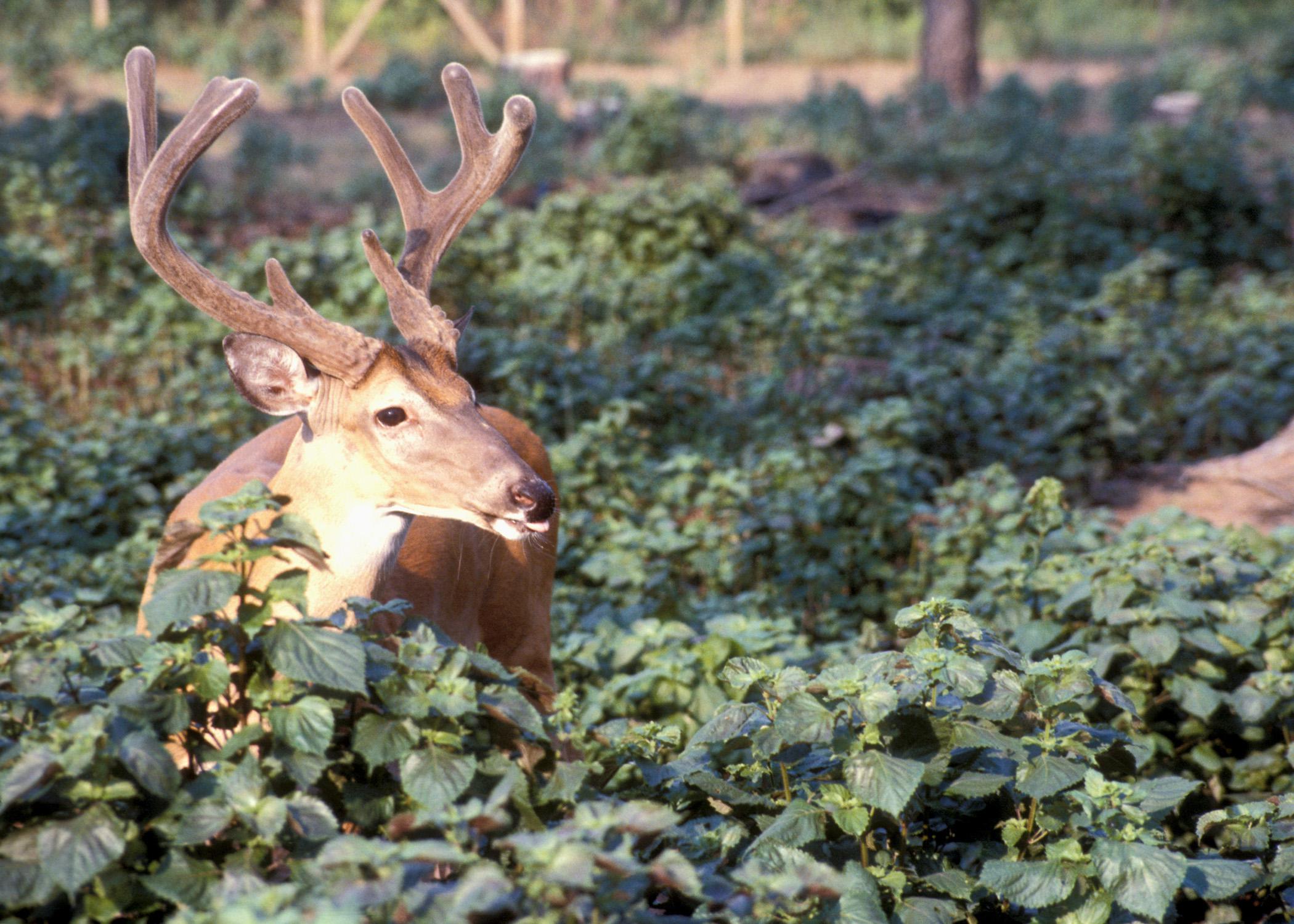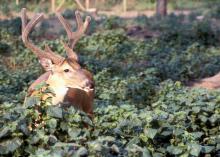Information Possibly Outdated
The information presented on this page was originally released on December 12, 2013. It may not be outdated, but please search our site for more current information. If you plan to quote or reference this information in a publication, please check with the Extension specialist or author before proceeding.
Land management for trophy bucks takes years
MISSISSIPPI STATE – Mississippi is one of the best places in the country for deer hunting because of excellent natural habitat and good management by landowners and hunters.
Bronson Strickland, wildlife specialist with the Mississippi State University Extension Service, said bagging a trophy buck is the successful result of time and careful implementation of a management plan.
“To reach your full potential for producing trophy bucks on your property, start by establishing good deer density and then work to create a good buck age structure, manage deer habitat and conduct selective harvests,” he said.
At the recent Row Crop Short Course, Strickland told producers, crop consultants and land managers that raising trophy bucks is a long and careful process. The first part is getting the right deer density.
Too many deer will overbrowse existing forage and bucks will not reach their full antler potential. Strickland said landowners can maintain deer density by shooting the correct ratio of does to bucks relative to the habitat’s population capacity.
The next step is creating a good buck age structure through selective harvest.
“Selective harvest manages the deer herd on the property by protecting the best younger bucks and harvesting the older bucks,” Strickland said. “You’ve got to get deer to 5, 6 and 7 years old to consistently produce trophy bucks.”
Culling is intentionally removing the least desirable deer from a herd, but high-grading is unintentionally removing the best. High-grading a herd results in capping the antler potential of the herd’s bucks.
“People managing for trophy bucks often can’t get over over the hump. Their bucks reach 3 1/2 years old, but the antlers don’t get bigger and they don’t know why,” Strickland said. “What happens is they keep taking the best bucks at 3 1/2 to 4 1/2 years, leaving the lower quality bucks to get old.
“Harvest of the younger, large-antlered bucks typically sets the glass ceiling,” he said. “Bucks with the most potential for growing large antlers must be protected when they are young and harvested only when they reach maturity if trophy management is your goal. It’s your resource to manage, but you have to understand the consequences of taking young bucks before their antlers have fully developed.”
Throughout the process, careful land management is key to the development of trophy bucks. Location makes a big difference in antler size.
“Antler size potential is defined by the soil,” he said. “There is a 30-inch antler difference found between the Delta and the Gulf Coast.”
Good soils produce good forage for deer, and the state’s best soil is found in the Delta. Land managers in other areas can take steps to improve the nutrition available to deer, improving the quality of trophy bucks.
Bobby Cole, president of Mossy Oak BioLogic in West Point, said deer nutrition relates directly to soil quality.
“You’re better off spending money on lime and fertilizer so you see more success,” Cole said.
He said hunters and land managers need to learn the soil management skills that experienced farmers use.
Cole encouraged land managers to amend the soil and follow sound agricultural practices to produce the most forage for wildlife.
“We want to overwhelm the deer with groceries,” Cole said.
He recommended that land managers install utilization cages on the food plots. These devices are very small, fenced-in areas that prevent wildlife from feeding in one spot.
“Utilization cages tell the story,” Cole said. “You can see how much an area has been browsed and whether or not you need to shoot some more does.”
While creating the environment to develop trophy bucks may be the goal, good land management practices also create habitat for other wildlife, such as ducks, bobwhite quail and turkey.
“Having wildlife diversity on your property is important,” Cole said. “It offers something for everybody who goes hunting.”









